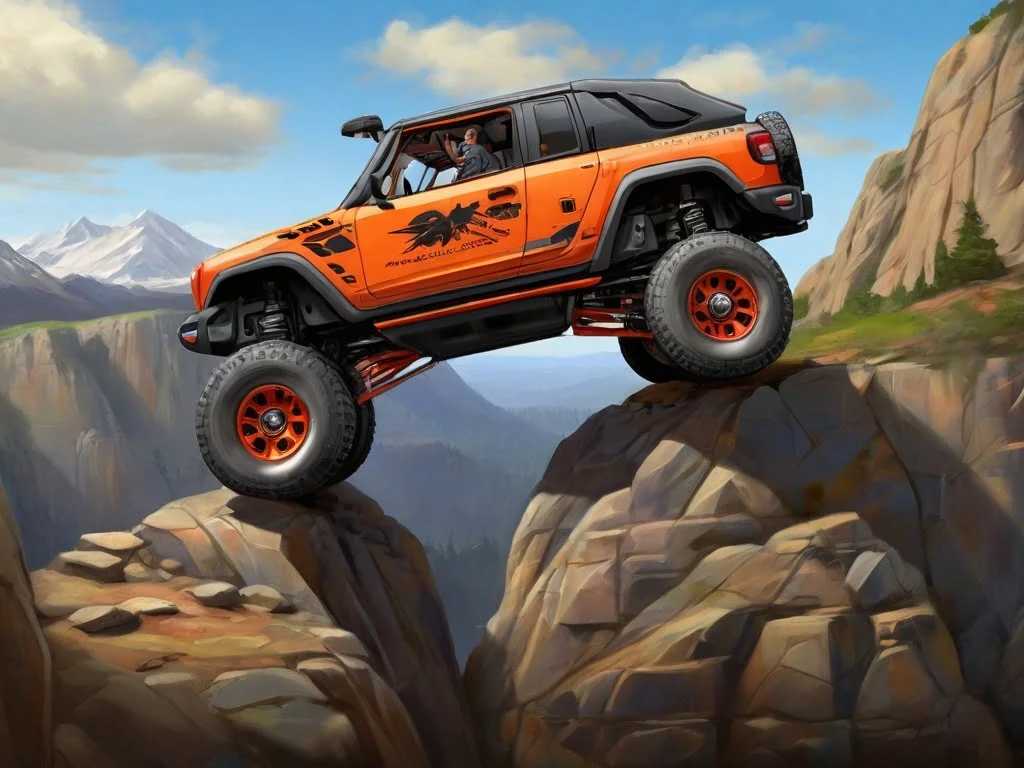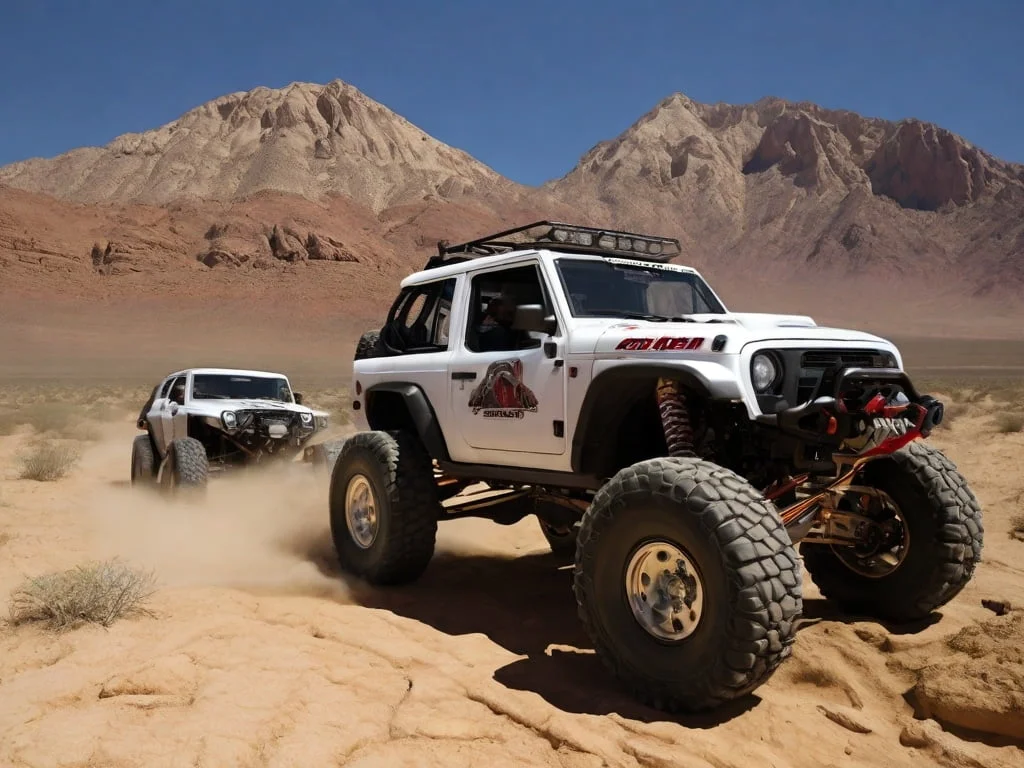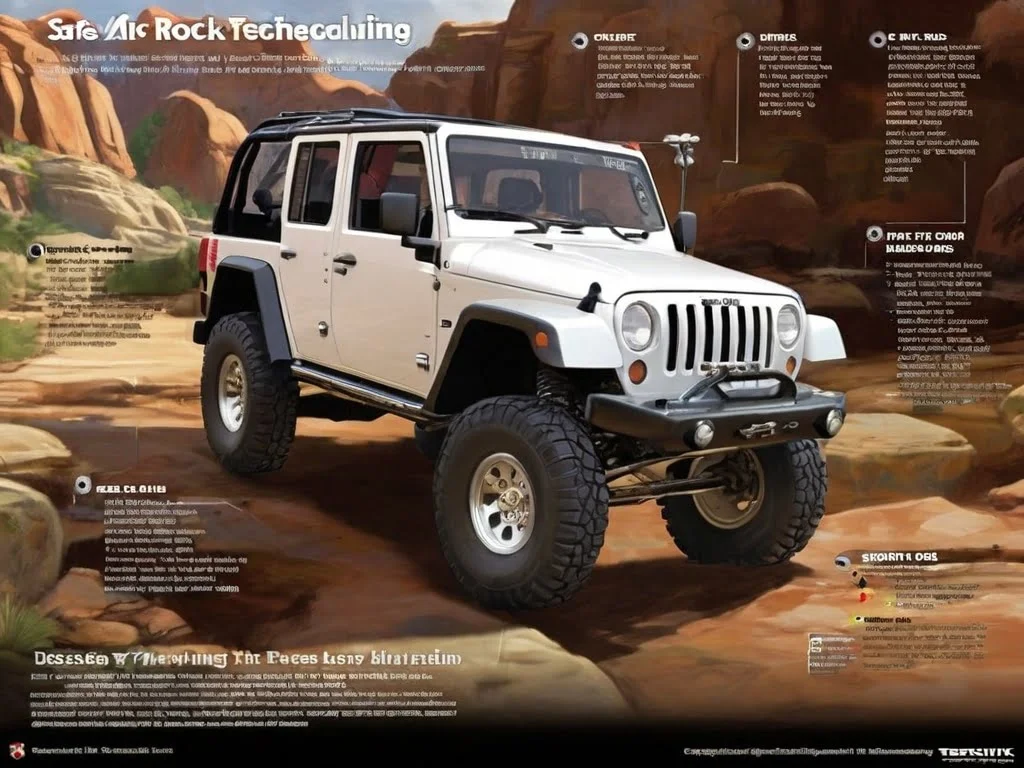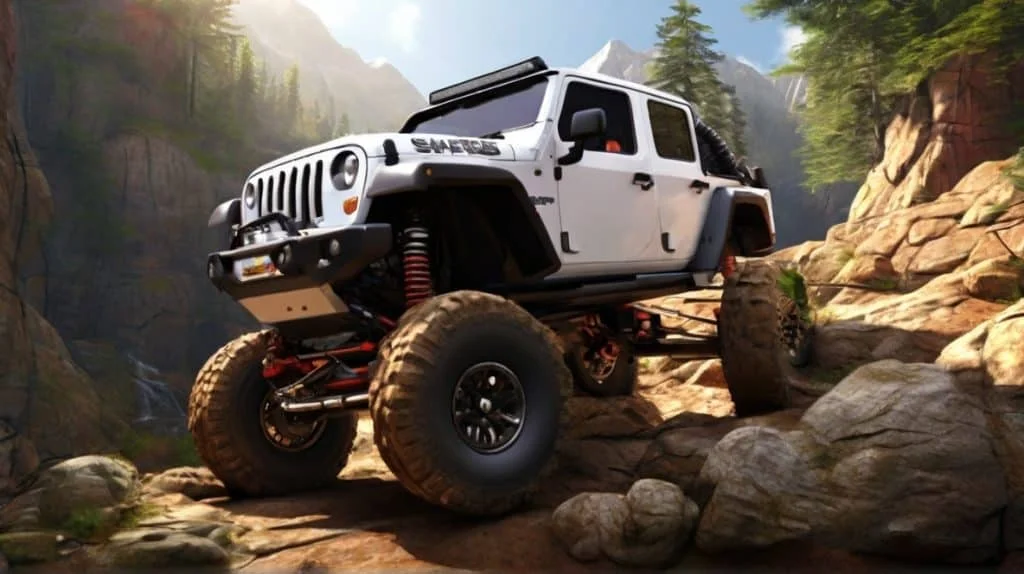Safe rock crawling techniques require slow speeds and a spotter to navigate obstacles. Keep your vehicle’s center of gravity low and choose a path that maximizes stability.
Rock crawling is an extreme form of off-road driving where drivers pilot 4WD vehicles over rugged terrain, typically involving large rocks and boulder fields. The objective is to conquer challenging landscapes while minimizing risks to both the vehicle and the driver.
Success in rock crawling hinges on meticulous vehicle preparation, selecting the right gear, and driving with deliberate, controlled movements. Mastery of these techniques can lead to a thrilling and safe off-roading experience, building skills that can translate into improved handling of a variety of challenging driving situations. Knowledge of your vehicle’s capabilities and limitations is crucial, coupled with an awareness of the environment and potential hazards.
The Essentials Of Rock Crawling
Rock crawling blends challenge with adventure. It tests both the vehicle and the driver. Success requires preparation, skill, and the right equipment. Let’s dive into what you need to tackle the terrain.
Vehicle Requirements
Prepare your ride before hitting the rocks. It must meet key requirements.
- High ground clearance – Essential to avoid obstacles.
- 4×4 drivetrain – Provides necessary traction and control.
- Large, grippy tires – Helps in navigating over rocks.
- Strong suspension – Offers stability and flexibility.
- Protective gear for the vehicle such as skid plates and rock sliders.
Safety Gear Checklist
Your safety on the rocks is crucial. Always pack these items:
| Personal Gear | Vehicle Gear |
|---|---|
|
|

Pre-crawl Preparation
Get set for a thrilling rock-crawling adventure! But first, let’s gear up with some smart prep work. Careful planning and vehicle checks can turn challenges into triumphs. Here’s how:
Route Planning
Finding the right trail is a rock crawler’s first step to success. Use these tips for a safer route:
- Study maps and guides to pick paths that match your experience.
- Check for obstacles that might be too tough for your vehicle.
- Plan your start and end points so you never get lost.
- Inform someone about your plan, so people know where you’ll be.
Weather Considerations
Weather shapes your crawling adventure. Keep these in mind:
| Weather Type | Preparation Needed |
|---|---|
| Rain | Waterproof gear, check for muddy paths |
| Sun | Sunscreen, plan to beat the heat |
| Snow | Chain tires, lookout for icy trails |
Vehicle Inspection
Give your off-road partner a thorough check. Don’t miss these steps:
- Tire integrity and pressure: Essential for grip and safety.
- Brakes and lights: Must work well to conquer terrain safely.
- Fluid levels: Oil and coolant are key to engine health.
- Suspension and steering: Critical for maneuverability on rocks.
Remember, these pre-crawl rituals ensure you enjoy every bump and turn on the trails!
Navigating The Terrain
Rock crawling is an extreme form of off-road driving, where enthusiasts use vehicles that range from stock to highly modified to conquer various obstacles. Specifically, in rock crawling, drivers expertly maneuver their rigs over challenging rocks, ascend steep inclines, and traverse other formidable terrain. Consequently, navigating this rugged landscape demands skill, patience, and mastery of proper techniques to ensure safety and success.
Spotter Communication
To safely navigate challenging obstacles during rock crawling, effective spotter communication is essential. Your spotter serves as your eyes on the ground, offering critical guidance. Furthermore, they provide real-time information, which is indispensable for guiding you through the most difficult spots.
- Clear hand signals: This keeps both the driver and spotter on the same page.
- Radio devices: Ensures messages are heard over engine noise.
Wheel Placement Strategies
In the challenging sport of rock crawling, achieving optimal wheel placement is crucial for maintaining balance and avoiding damage to your vehicle. This technique involves carefully discerning the exact spots where your tires should be positioned to secure the best grip and stability, which, in turn, significantly boosts your vehicle’s performance on hazardous terrain.
- High and dry: Keep tires on solid, high ground.
- Track the terrain: Approach angles with care.
Throttle And Braking Control
Gaining proficiency in throttle and brake control is critical in rock crawling, as it can notably enhance your vehicle’s handling. By carefully and strategically applying these controls, you can successfully prevent wheel spin. This, in turn, aids in preserving the vital traction needed on uneven surfaces.
- Gentle throttle: Apply power slowly to avoid wheel spin.
- Controlled braking: Use brakes carefully to stay in control.

Crawling In Action
Rock crawling truly comes alive when you witness Crawling in Action; it’s where the excitement peaks. This experience is a testament to one’s skill, patience, and precision. As you carefully navigate your vehicle over the rugged landscape, each decision you make is of utmost importance. Moreover, get ready to delve into safe rock crawling techniques that will empower you to tackle the challenging paths with both finesse and agility.
Reading The Safe Rock Crawling Techniques
The first step in successful rock crawling is understanding the terrain. Close observation of the rock ahead gives insight into the perfect path for your vehicle. Look for the following when you read the rock:
- Stable surfaces that will support your vehicle’s weight.
- Angles and inclines you can use to your advantage.
- Avoid areas with loose rubble that may shift under pressure.
Dealing With Obstacles
In the dynamic world of rock crawling, obstacles present themselves in a myriad of shapes and sizes. To effectively tackle them, consider the following tips:
- Approach at an angle to keep the tires in contact with the rock.
- Use a spotter to guide you through difficult sections.
- Maintain consistent throttle control.
Recovery Techniques: Safe Rock Crawling Techniques
Sometimes, despite your best efforts, your vehicle may become stuck. Here’s what you should do:
| Technique | Description |
|---|---|
| Winching | Use a winch to pull your vehicle to stable ground. |
| Jack Lifts | Lift your vehicle and add rocks underneath to regain traction. |
| Traction Boards | Place boards under tires to provide extra grip. |
Bear in mind that the cornerstone of safe rock crawling hinges on meticulous route planning and the utilization of appropriate recovery gear. Additionally, it’s worth noting that patience and refined technique consistently triumph over brute force.
Post-crawl Protocol
Rock crawling not only thrills but also pushes your vehicle’s capabilities to the edge. However, once the excitement fades and the adrenaline subsides, seasoned crawlers recognize that the subsequent ritual is just as critical as the ascent. The Post-Crawl Protocol, involving meticulous inspections and a reverence for the environment, ensures both your vehicle and nature remain unspoiled for future escapades. Now, let’s explore the vital steps that should be taken after a crawl.
Vehicle Maintenance: Safe Rock Crawling Techniques
Your vehicle has been reliable on the trails; now, it’s your turn to take care of it. Firstly, begin with an exhaustive cleaning process, washing away all the mud and debris that could conceal damage or lead to corrosion. Subsequently, conduct a thorough inspection of your vehicle, from the tires to the rooftop. Following that, address these crucial maintenance tasks:
- Check tires for cuts or punctures
- Review the undercarriage for any signs of strain or impact
- Examine suspension components for integrity
- Assess fluids for leaks and top off as needed
- Test brakes and replace pads if worn
Following a thorough inspection of your vehicle, it’s crucial to meticulously record your findings and subsequently develop a strategy for any necessary repairs. Moreover, keeping a detailed logbook proves to be advantageous, as it facilitates ongoing monitoring of your vehicle’s condition and creates an invaluable chronicle of its maintenance history.
Environmental Considerations: Safe Rock Crawling Techniques
Adventure is intrinsically linked with environmental stewardship. It’s important to consider your environmental footprint and commit to the Leave No Trace principles. Therefore, after each crawl, it is essential to ensure that:
- All trash is collected and disposed of properly
- Spilled fluids are cleaned up
- Local wildlife is undisturbed
- Trail paths are left as found
Adhering to these guidelines, you not only show respect for the environment but also contribute to the preservation of the natural beauty and sustainability of off-road trails, ensuring that they can be enjoyed by future generations.
By sharing insights with fellow crawlers, you actively promote responsible practices. Moreover, when united, the rock-crawling community can work collectively to safeguard the rugged landscapes we all cherish.

Frequently Asked Questions Of Safe Rock Crawling Techniques
What Are Key Rock Crawling Safety Techniques?
Rock crawling safety hinges on proper vehicle preparation, including ensuring reliable tires, functional suspension, and protective gear. Additionally, drivers should have a clear understanding of their vehicle’s capabilities and limitations and always maintain a slow, controlled pace over obstacles to minimize risk.
How Do I Prepare My Vehicle For Safe Rock Crawling Techniques?
Preparing your vehicle for rock crawling is a multi-step process that begins with checking tire pressure and confirming the use of high-quality off-road tires. Additionally, it’s important to reinforce the vehicle’s undercarriage with skid plates and to thoroughly inspect all suspension components. Furthermore, conducting regular maintenance checks on brakes, ensuring steering stability, and verifying drivetrain integrity are crucial steps that contribute to a safe rock crawling experience.
What Are The Best Practices For Spotting Safe Rock Crawling Techniques?
Effective spotting in rock crawling entails clear communication between the driver and the spotter. The spotter should provide concise, visible hand signals to guide the driver over obstacles. Both parties must discuss the route and signals before beginning the crawl for safe execution.
How Can I Improve My Safe Rock Crawling Techniques?
Enhancing your rock crawling technique requires consistent practice. Moreover, it’s essential to understand your vehicle’s approach and departure angles, as well as to become adept at reading the terrain. Additionally, make use of low gear ratios to gain better control and increased torque. Lastly, focus on applying the throttle smoothly to avoid wheelspin on challenging surfaces.
Conclusion
Mastering safe rock crawling transcends the pursuit of thrill; it’s about embarking on a smart, secure adventure. To this end, it’s imperative to equip yourself with the appropriate gear, acquire the necessary knowledge, and cultivate a deep respect for the terrain. Additionally, it’s important to remember that consistent practice is key to refining your skills, which ensures that each climb is not only enjoyable but also safe.
Let’s tread wisely, approaching the rugged paths with both confidence and care. In doing so, we can ensure a fulfilling and safe experience. Happy crawling!


